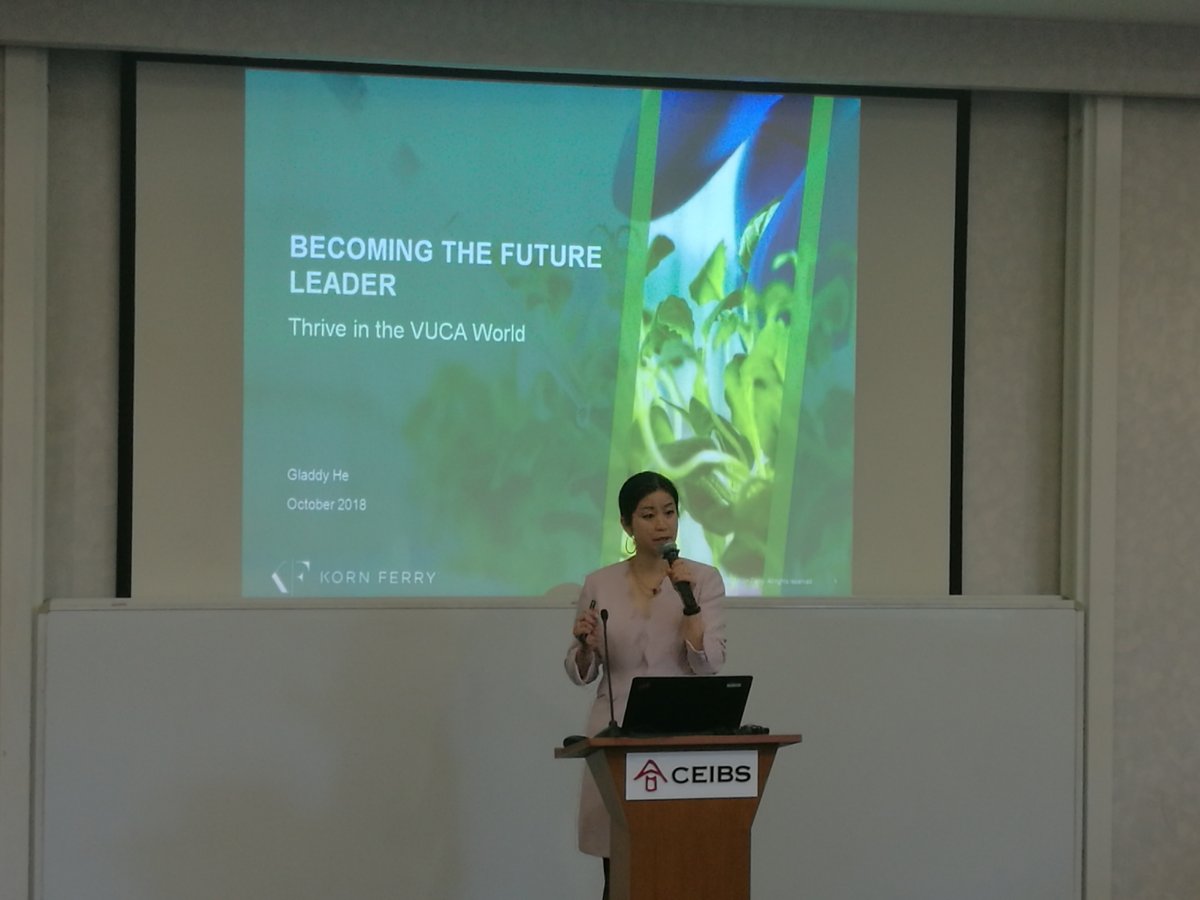How to Become a Future Leader in the VUCA era?
October 18, 2018. Shanghai – CEIBS Career Development Center (CDC) marked the launch of a new career support services for Global EMBA and MBA alumni within five years of graduation with a kick-off sharing session on how to become a future leader in the VUCA era.
Senior Client Partner & Managing Director of Life Science Practice Asia Pacific at Korn Ferry Gladdy He was invited as a guest speaker to share her insights on leading in the face of volatility, uncertainty, complexity, and ambiguity (VUCA).
The rapid development of digital technologies such as big data, IoT, machine learning, blockchain, and AI is forcing companies to transform on the organisational level – not only in terms of their business models, but also in terms the management of their workforce. “In the past five years, the demand for high-quality talents in various industries has shown a significant upward trend,” Gladdy said. “The conventional leadership model can no longer cope with the new challenges.
Drawing on a recent survey by Korn Ferry, Gladdy summarised some of the prominent challenges facing organisations today:
-
Nearly half of all human resources managers surveyed believed that their existing talent pool does not meet their company’s needs
-
85% of North American and Asian companies feel that they do not have decent qualified successors in the pipeline for key leadership positions
-
Nearly 40% of internal job moves made by employees were identified by their companies as high potential to fail
-
Organisations agreed that identifying high-potential employees is important, yet only 9% said they had a systematic process in place to identify them
Further complicating the picture, Gladdy highlighted the compressed leadership development cycle in China. “It would usually take more than 25 years from entry level through to executive and management, but in China’s context, the cycle is much quicker, around 15 years,” she said. “In light of this, simply working hard is not enough. To develop the individual as a whole is key. In short, volatility requires vision, uncertainty requires better understanding, complexity requires clarity, and ambiguity requires agility.”

















